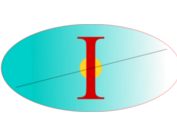Citation:
| vlcek2017stoch.pdf | 393 KB |
Abstract:
Quasiparticle (QP) excitations are extremely important for understanding and predicting charge transfer and transport in molecules, nanostructures and extended systems. Since density functional theory (DFT) within Kohn-Sham (KS) formulation does not provide reliable QP energies, a many-body perturbation technique within the GW approximation are essential. The steep computational scaling of GW prohibits its use in extended, open boundary, systems with thousands of electrons and more. Recently, a stochastic formulation of GW has been proposed [Phys. Rev. Lett. 113, 076402 (2014)] which scales nearly linearly with the system size, as illustrated for a series of silicon nanocrystals exceeding 3000 electrons. Here, we implement the stochastic GW (sGW) approach to study the ionization potential (IP) of a subset of molecules taken from the "GW 100" benchmark. We show that sGW provides a reliable results in comparison to GW WEST code and to experimental results, numerically establishing its validity. For completeness, we also provide a detailed review of sGW and a summary of the numerical algorithm.
Notes:
RBaer-Publication



